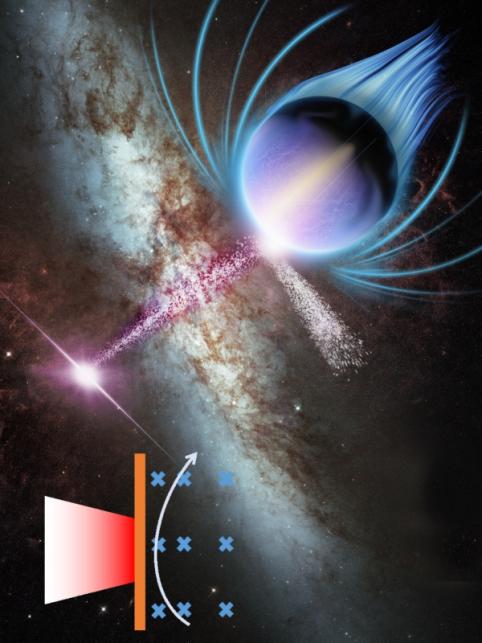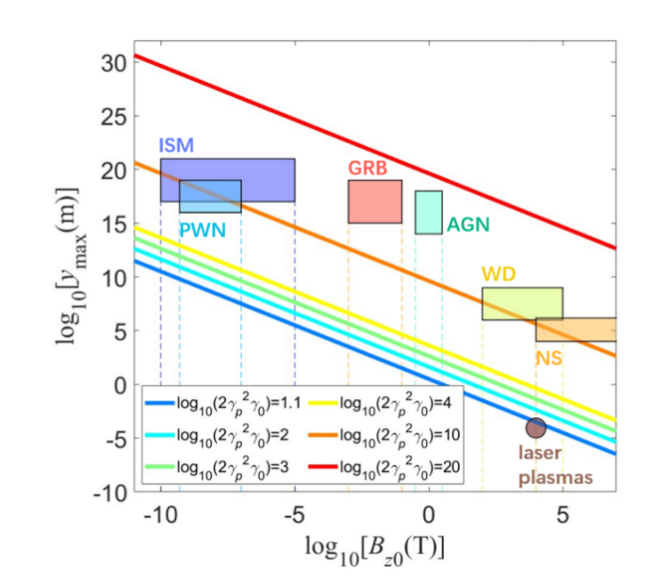Recently, Shen Baifei, a researcher from the SHNU School of Mathematics and Science , and Gong Zheng, an associate researcher from the Institute of Theoretical Physics of the Chinese Academy of Sciences, proposed a new and efficient particle acceleration mechanism, called relativistic electromagnetic shock acceleration mechanism.
In the universe, violent astronomical events such as supernova explosions can generate large-scale plasma jets moving at near the speed of light. The following figure shows the relationship between the maximum proton acceleration distance and the initial magnetic field strength, as well as the maximum energy. The line represents the relationship between the maximum proton acceleration distance y_max and the magnetic field strength Bz0, assuming the velocity of the celestial body is v_p=0.925. The colored regions display typical magnetic field strengths and distance ranges of celestial bodies such as interstellar matter (ISM), pulsar wind nebulae (PWN), gamma ray bursts (GRB), active galactic nuclei (AGN), white dwarfs (WD), and neutron stars (NS).
At present, the power of the ultra strong laser has reached 10 watts, and the Extreme Optical Physics Line Station under construction in Zhangjiang, Shanghai plans to achieve a laser output of 50 watts. Such high-intensity laser can generate extremely strong light pressure after focusing.





